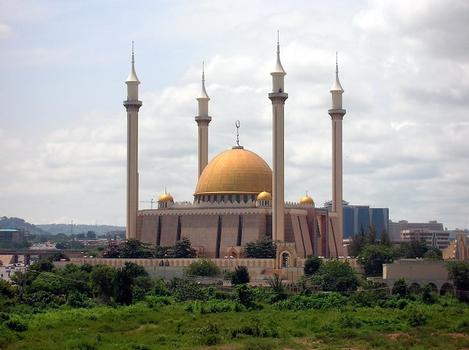Famous Nigerian Monuments

Nigeria, a vibrant tapestry of cultures and histories, is home to a variety of monuments that reflect its rich heritage and diverse traditions. Here’s a look at some of the most famous Nigerian monuments that capture the essence of the country’s past and present.
1. Aso Rock
Located in Abuja, the capital city of Nigeria, Aso Rock is a prominent natural landmark. This massive rock formation rises 400 meters above the surrounding landscape and is a symbol of Nigeria’s modern political identity. The name “Aso” is derived from the local Gwari language, meaning “victory.” Aso Rock stands as a silent sentinel to the seat of Nigeria’s government, overlooking the Presidential Complex, the National Assembly, and the Supreme Court.
2. The National Mosque, Abuja
The National Mosque, also situated in Abuja, is one of the largest mosques in Africa. Its architectural grandeur, characterized by its towering minarets and expansive prayer hall, represents the rich Islamic heritage of Nigeria. The mosque’s design combines traditional Islamic motifs with modern elements, making it a significant place of worship and a symbol of national unity.
3. The National Arts Theatre, Lagos
A masterpiece of Nigerian architecture, the National Arts Theatre in Lagos is an iconic building that serves as a cultural hub. Designed by architect Theo Lawson and completed in 1976, its distinctive shape resembles a military hat and reflects traditional African art forms. The theatre is a center for performing arts, showcasing Nigeria’s vibrant cultural scene through music, dance, and drama.
4. Olumo Rock
Located in Abeokuta, Ogun State, Olumo Rock is both a natural and historical monument. This massive granite rock served as a fortress for the Egba people during the 19th-century inter-tribal wars. Today, it is a popular tourist destination, offering panoramic views of Abeokuta and a glimpse into the traditional lifestyles of the Egba people. The rock’s historical significance and scenic beauty make it a must-visit landmark.
5. The Slave Trade Relics in Badagry
Badagry, a town on Nigeria’s southwestern coast, is home to several monuments that commemorate the transatlantic slave trade. The Badagry Slave Museum, the Point of No Return, and the Agia Tree are significant sites that highlight Nigeria’s role in the slave trade and serve as important reminders of the historical injustices faced by enslaved Africans. These monuments are crucial for understanding the impact of the slave trade on Nigeria’s history and culture.
Nigeria’s monuments are not just structures; they are narratives carved in stone, metal, and earth. They tell stories of resilience, culture, and the diverse history of this West African nation. Each monument, from the natural grandeur of Aso Rock to the poignant historical sites in Badagry, offers a window into Nigeria’s past and present, enriching our understanding of its heritage.




